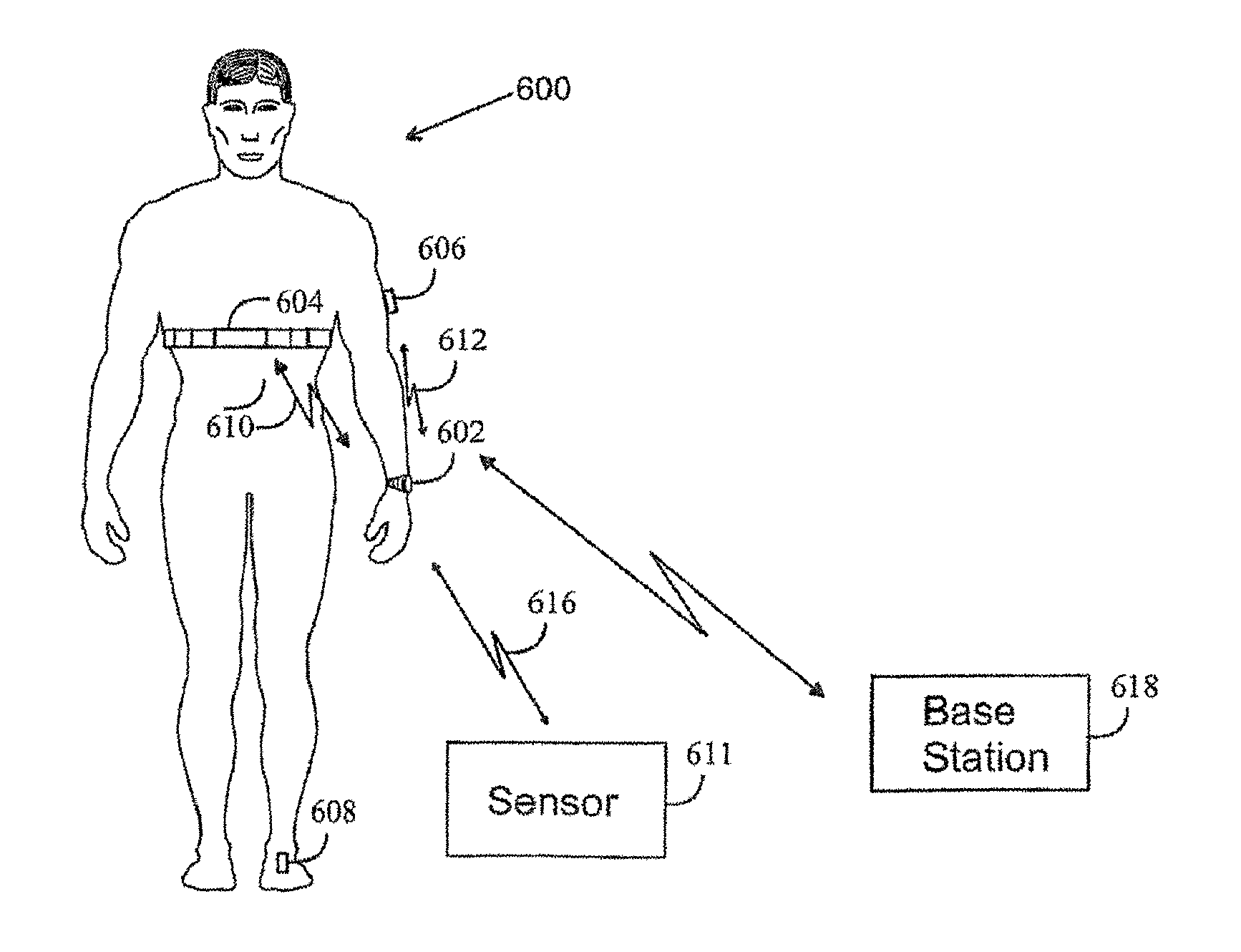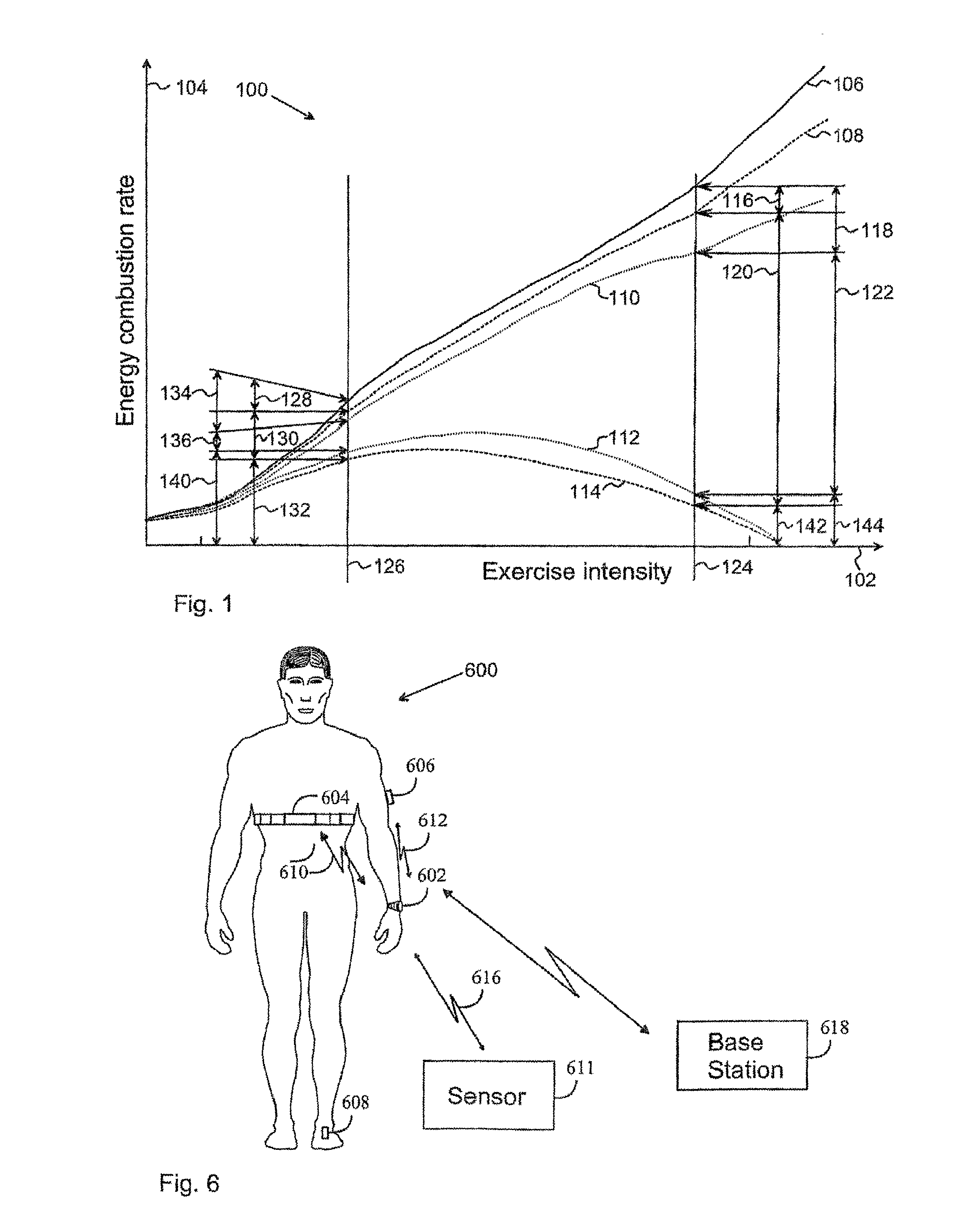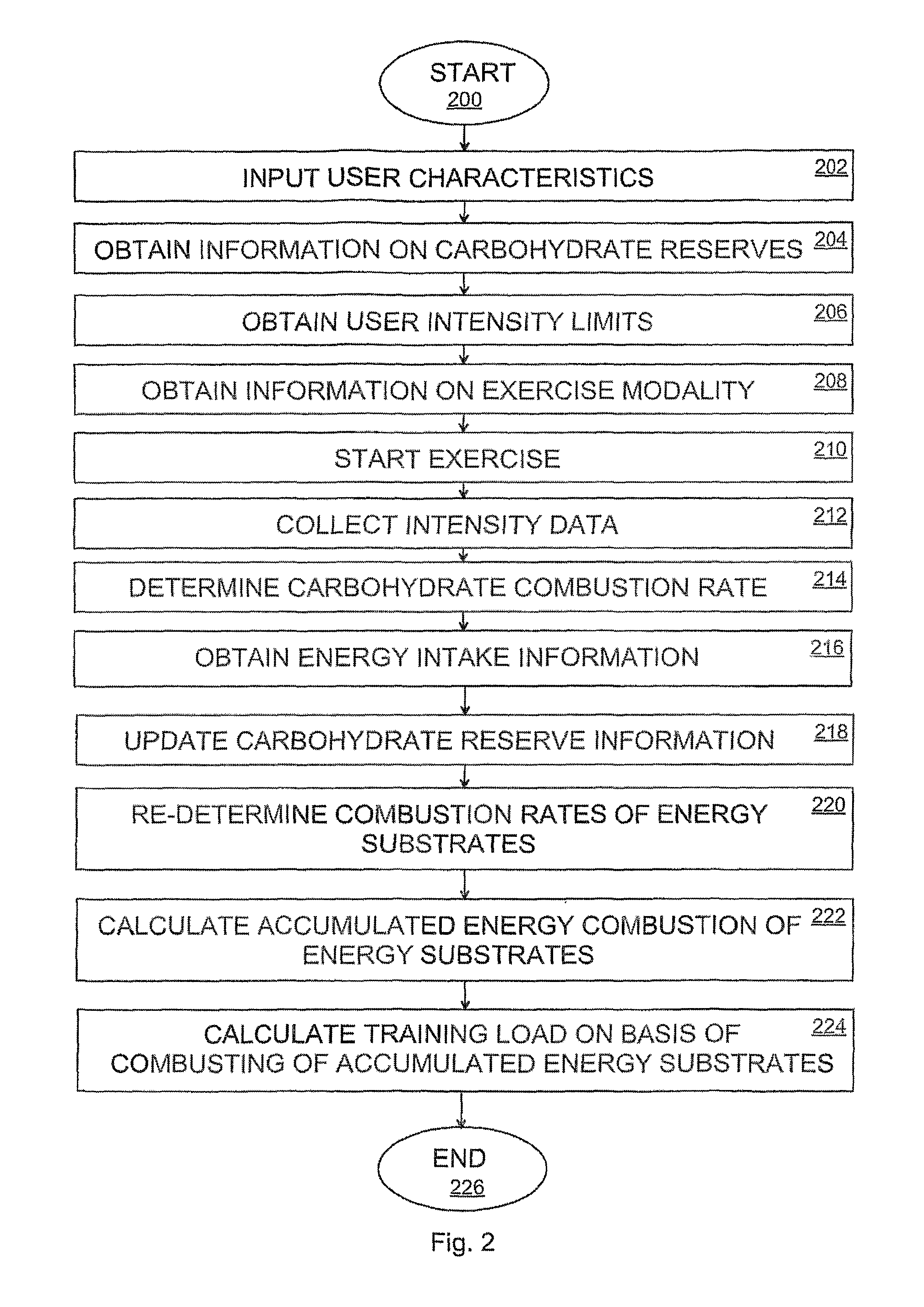Apparatus for Metabolic Training Load, Mechanical Stimulus, and Recovery Time Calculation
a metabolic training and metabolic technology, applied in the field of apparatus for metabolic training load and mechanical stimulus, can solve the problems of insufficient or accurate determination of the extent and intensity of training and exercise sessions, inaccuracy and insensitivity to exercise history, and further complicated process, so as to reduce the number of post-exercise doms, slow metabolic recovery, and improve the effect of recovery tim
- Summary
- Abstract
- Description
- Claims
- Application Information
AI Technical Summary
Benefits of technology
Problems solved by technology
Method used
Image
Examples
Embodiment Construction
[0033]With reference to FIG. 1, let us consider a group 100 of energy combustion curves 106, 108, 110, 112, 114 illustrating how a person's different energy substrates, such as fat, carbohydrates, and proteins are utilized at different carbohydrate reserve situations and exercise intensities. The x axis 102 shows exercise intensity in arbitrary units, while the y axis 104 illustrates energy combustion rate in Kcal / min units, for example. The dashed curves 108, 114 represent a case where the carbohydrate reserves are high. Such an exercise stage may be the beginning of the exercise and when the person's nutrition stage is stable. The dotted curves 110, 112 illustrate a case where the carbohydrate reserves are low. The solid curve 106 shows total energy combustion rate as a function of the exercise intensity. The energy combustion may also be referred to as energy expenditure.
[0034]A carbohydrate reserve characterizes the amount of carbohydrates available for energy combustion in the ...
PUM
 Login to View More
Login to View More Abstract
Description
Claims
Application Information
 Login to View More
Login to View More - R&D
- Intellectual Property
- Life Sciences
- Materials
- Tech Scout
- Unparalleled Data Quality
- Higher Quality Content
- 60% Fewer Hallucinations
Browse by: Latest US Patents, China's latest patents, Technical Efficacy Thesaurus, Application Domain, Technology Topic, Popular Technical Reports.
© 2025 PatSnap. All rights reserved.Legal|Privacy policy|Modern Slavery Act Transparency Statement|Sitemap|About US| Contact US: help@patsnap.com



